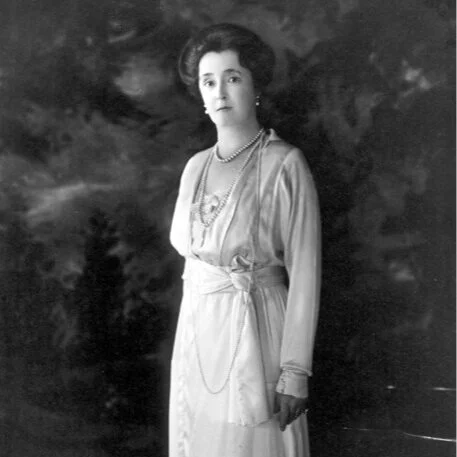Mauresette
The first installment of Edith May’s syndicated newspaper column describing her experiences with the Ziegfeld Follies. This image is from the Wisconsin State Journal, September 17th 1920.
“Venus de Medici is used instead of Venus de Milo because the later would be considered rather fat in these days. The former is nearer present conception of the ideal feminine form. The measurements on the right are those of Mauresette, a Ziegfeld beauty, selected by Flo Ziegfeld as the Perfect Chorus Girl.” — From Edith May’s syndicated column in the Wisconsin State Journal, November 17th 1920.
Mauresette lead me to some interesting discoveries about the behind-the-scenes working of the Ziegfeld Follies. For readers new to this website, in 1920 local Monroe beauty Edith May Leuenberger won a six-week contract to work as a chorus girl for Flo Ziegfeld’s burlesque show. Edith May’s story ties into the Goetz Theater’s history because Leon Goetz made a movie with Edith May about her experiences with Ziegfeld shortly before he was forced to sell his Monroe business after legal duress. Goetz theater interests wouldn’t have another premises in Monroe until 1931 when the brothers opened the iconic theater on the south side of the Square.
The image above is the first installment of Edith May’s syndicated column, offered through the Newspaper Enterprise Association (NEA) which sponsored the National Salesgirls Beauty Contest, Ziegfeld’s contest. The NEA was a Chicago-based newspaper content provider and a distributor for the work of Monroe’s famous political cartoonist, Art Young, whose brother William was a leading newspaper editor in both Chicago and New York City. The NEA sold this graphic of Edith May next to Mauresette to papers across all fifty states, including Monroe’s Evening Times, which was a regular NEA customer.
Who was Mauresette, and why was she the standard against which Edith May was advertised, if not judged?
Mauresette was originally a fashion model for Lady Duff-Gordon, the proprietress of the ‘Lucile’ fashion house and a celebrity in he own right. LDG was a marketing genius and her models were part of the ‘Lucile’ product. She borrowed techniques from expensive bordellos, such as adopting the one-name moniker and inventing exotic backstories for her models— models who were designed to attract male as well as female patronage. (For a scholarly investigation of this phenomenon see Caroline Evan’s “The Enchanted Spectacle” in Fashion Theory, Vol. 5 Issue 3; 2001.)
Much like her models, Lady Duff-Gordon was a titillating creation of her own imagination. She was born Lucy Sutherland, her father was Canadian and her mother French. After her first marriage failed around 1893, she supported herself making dresses in London and this was the beginning of her rise to fame. LDG dressed aristocrats and well-to-do theater people— the type of patrons who could afford fabulous, exotic pleasures. In 1900 she caught the hand of Baronet Cosmo Duff-Gordon, a wealthy Scottish landowner and sportsman. The Duff-Gordons had impressive family connections with the British East India Company stretching back to Jeremy Bentham and BEI Co spymaster John Stuart Mill, who in turn enjoyed extensive patronage out of Vienna.
LDG and her sister, who wrote under the name “Elinor Glyn”, were experts at marketing sex. Between them they developed the phenomenon of the “It” girl and the Hollywood starlet; their most famous creation being Clara Bow. LDG would design the lingerie and Glyn would design the lifestyle… the red thread that ran through this marketing creation was that of organized international prostitution which, prior to WWI, enjoyed state sponsorship from Austro-Hungary because of its usefulness for gathering intelligence. The sister’s glamorous connections inside foreign services circles belie the dark reality of what it meant to be a high-class prostitute before the Great War.
In light of the political realities of fin de siècle world, it shouldn’t be surprising that after the dissolution of Austro-Hungary LDG ended up working in NYC or that she chose Florenz Ziegfeld as her business partner. Given Ziegfeld’s preoccupation with packaging and commodifying the American Girl, it’s should be surprising that “Mauresette” would eventually give way to “Edith May”.
The exquisite “Mauresette” as photographed by Alfred Cheney Johnson in Theater Magazine, July 1919.
Another Alfred Cheney Johnson photograph where Mauresette is this time compared to Marilyn Miller. The image is from the July 20th 1919 edition of Town and Country magazine. The caption reads: ““Mauresette” is a Lucile model and, in common with all Lucile models, hides her identity behind a fanciful name. She is Oil in “The Follies Salad”, an oriental degagee lady in the “Harem Number”, and Humoresque in “A Pretty Girl is Like a Melody.” After the music she takes to drink— soft drink— and becomes Bevo in “A Saloon of the Future.”
A write-up on Mauresette from the June 1919 edition of The Green Book Magazine. Much of Mauresette’s press coverage was out of London, rather than NYC.










